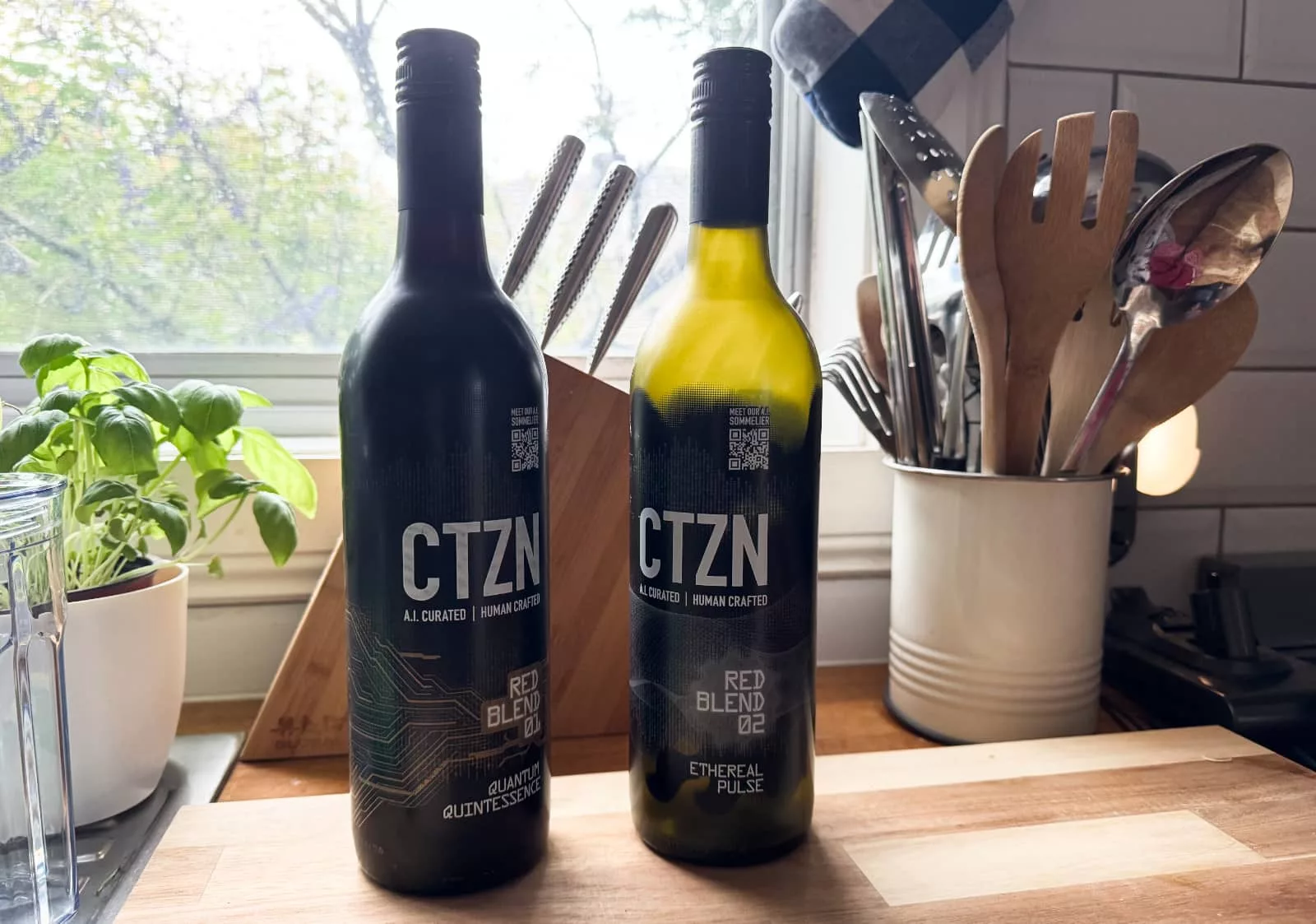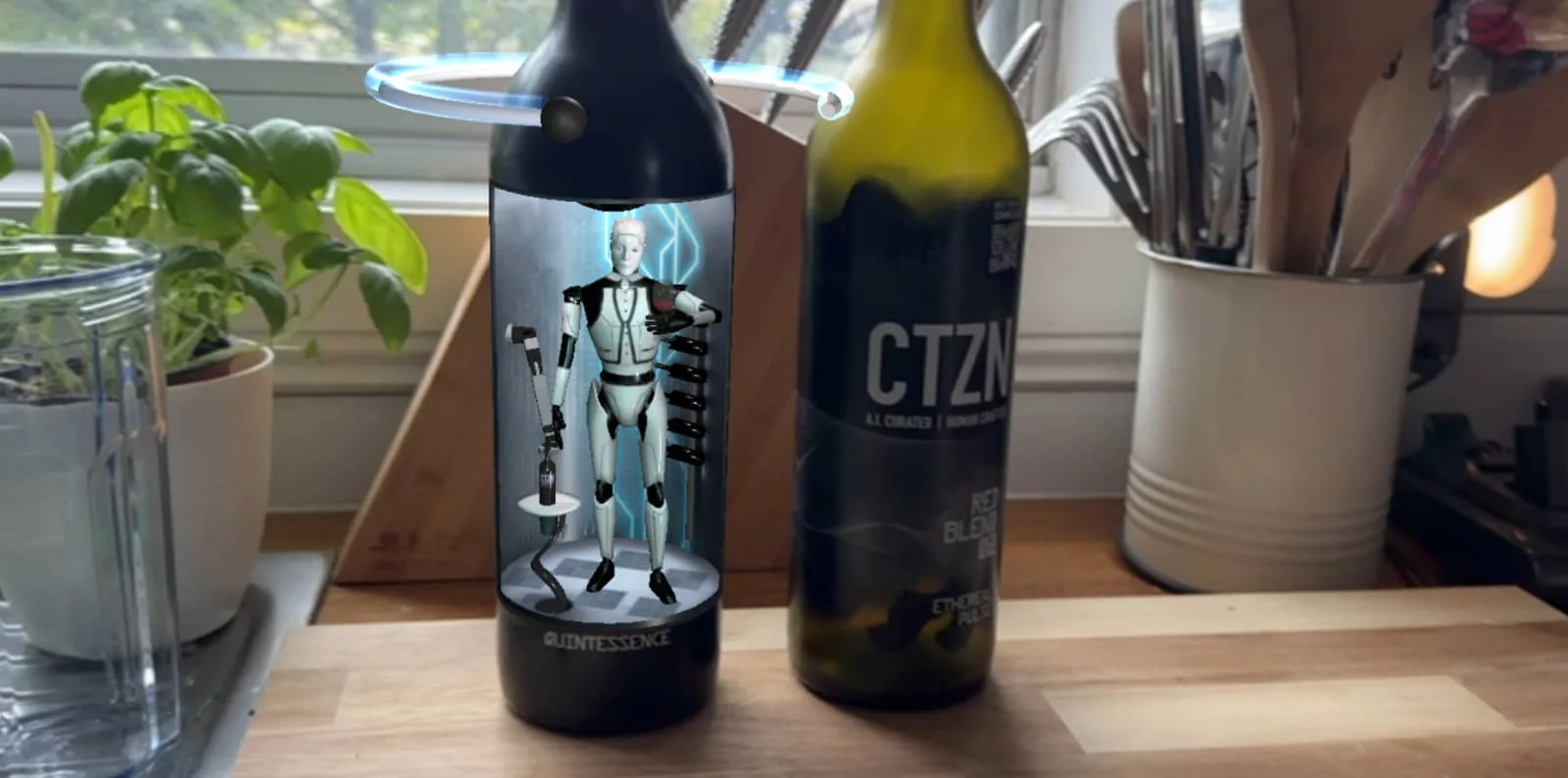AI gets a story nearly every week, and this week, the technology is affecting wine. Can AI make a better drop?
It arrived on a Thursday night: a silver case with a combination lock, and a tag suggesting riddles we should solve. Work the clues and you’ll be treated to what’s inside. It seemed easy enough.
Except for that as we pushed on, we found one answer worked and the other did not. Repeated attempts and tries were showing us that either we didn’t get the answer, or maybe our case was broken. Frankly, both could have been true.
Two wine experts and one frustrated reviewer later, we did the only thing that made sense: we reached for a screwdriver and broke in. No one should ever make someone work this hard for wine. It borders on criminal.
What was inside? The equivalent of AI wine, which may as well be known as WineGPT.
Wine GPT
Spend enough time around the technology tracks and you’ll quickly find the word “AI” is overused.
AI has good purposes, and this year is definitely the year that AI becomes a trend everyone is talking about. We’re seeing it everywhere, from this year’s crop of AI-enhanced phones to the new era of AI PCs and now, yes, wine.
Owned by Australian Vintage, Ctzn wines aims to use an the Generative Pre-trained Transformers (GPTs) made famous by ChatGPT to understand wine. The idea is not unlike a Belgian idea to use AI to make a better beer, but instead applies an AI model to take wine varietals and make a good blend of wine.
As a user, you’re not accessing the AI system directly, but rather outcome, which is made from a combination of winemakers and artificial intelligence. In essence, AI is the tool being used to help make Ctzn’s wines, as distinct from say using an AI as a sommelier, in which case a few already exist, such as the Wine GPT app.
However, the AI is just one part of this bottle.
An AI wine with an AR gimmick
The other aspect is a bit of entertainment or edutainment, anyway, with a QR code on the front of each bottle running an augmented reality experience inside your phone’s web browser and opening up to reveal the AI sommelier as a robot inside your bottle.
Somewhere between something out of I, Robot and a sci-fi future that feels a little too eerie to contemplate, the digital robot popping out of the bottle aims to talk about not just how the wine was made, but how to taste the wine.
It’s an experience, for sure, but one that feels a lot like a gimmick. An eerie gimmick.
What does an AI wine taste like?
While there is clearly a lot of marketing associated with Ctzn’s wines, evident from the augmented reality activation with an animated robot inside our wine, the drop isn’t as bad as we were expecting. Maybe it’s just us, but excess marketing tends to give off the vibe that the result will be worse because of it.
Rather, the “Ethereal Pulse” drop we taste was fine and had a nice nose, but was clearly a young wine. The colour wasn’t heavy, the tears light, and taste totally acceptable, even if it lacked personality.
It was a nice enough wine, though we’re not entirely sure it’s a 24-buck wine. Yes, $24 is roughly how much a bottle of AI-made wine costs.

Ctzn’s other drop, “Quantum Quintessence”, has the sort of marketing-focused name that makes a journalist roll their eyes. Fortunately, you don’t have to gaze at that label for too long, unless you want to watch the robot talk through your web browser.
Quantum was marginally better, a deeper colour that tasted a little better overall, but still didn’t come across what a $24 wine should.
In fact, if anything, it reminded us of McGuigan’s Single Batch wines, $15 drops that offered good enough flavour for a good enough price, but lacked the vintage in year on the label.
The Ctzn wines lack the same, with no vintage and little in the way of complexity. That’s not necessarily a bad thing — vintage-less wines can still be absolutely charming — but it does make you wonder whether Ctzn wines are mostly marketing, because they definitely feel like it.

Is AI-based wine the future?
Years ago when this journalist started out, he interviewed the CSIRO about what the future of wine held. At the time, some of the country’s brightest minds were working on genetically-engineered grapes to create wine, something the organisation has seen success with in six varietals.
Using science to create grapes that make better wine is complex science, but it does mean better wine in a faster time period may actually be possible, and isn’t quite the same as AI-based wine.
Rather, AI wine would ideally be about having a computer model understand the qualities of what makes good wine, and finding the appropriate balance per drop.
And it may well work, but we suspect it’s only part of what’s needed. Making wine is a complex process, and while choosing the right grapes is a part of the process, it is only one part of that process.
We’re sure that over time this will get better, but right now AI-mixed wine feels very much like more marketing than making great wine. However, it still might be worth a drop, if only because it’s a little like early adopting a bevy, rather than typical tech.






